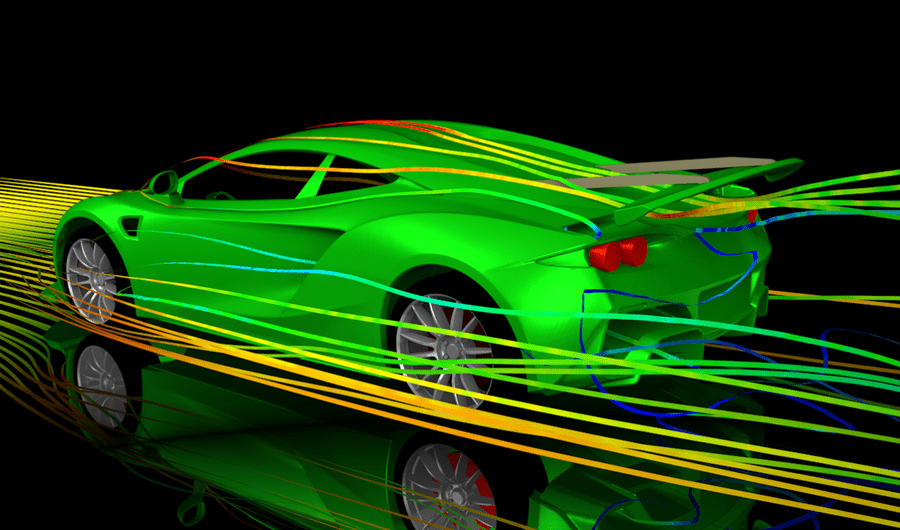Vehicle Aerodynamics
The landscape of vehicle aerodynamics is undergoing a significant transformation, propelled by the relentless quest for efficiency, performance, and environmental sustainability. As the automotive industry evolves, so do the technologies that shape the aerodynamic profiles of modern vehicles. This article delves into the trending technologies in vehicle aerodynamics, exploring their mechanisms, applications, and potential impacts on the future of transportation.
Active Aerodynamics
Unlike traditional static aerodynamic features, active aerodynamics adapt to varying driving conditions in real-time. This technology employs components such as active grille shutters, adaptive spoilers, and variable air intakes, which adjust automatically to optimize airflow around the vehicle. For instance, active grille shutters can open to allow air to cool the engine and close when cooling is not needed, reducing drag. Adaptive spoilers extend at high speeds to increase downforce, enhancing stability and grip, then retract at lower speeds to minimize drag. These intelligent systems significantly improve fuel efficiency and performance by dynamically balancing the trade-off between drag reduction and cooling or downforce needs.
Aerodynamic Wheels and Tires
The design of wheels and tires plays a crucial role in vehicle aerodynamics. Aerodynamic wheels are designed to minimize air turbulence and resistance, which can significantly affect a vehicle’s overall aerodynamic efficiency. Manufacturers are developing wheels with smoother surfaces and enclosed designs to reduce drag. Similarly, tire manufacturers are focusing on designs that offer less rolling resistance and aerodynamic drag, contributing to better fuel efficiency and reduced emissions.
Underbody Aerodynamics
The vehicle’s underbody is a critical area for aerodynamic optimization, often overlooked in conventional designs. Innovations such as underbody panels and diffusers smooth the airflow beneath the vehicle, significantly reducing drag. These components can also help direct air to cool the drivetrain and brakes, improving performance and durability. By managing underbody airflow, manufacturers can achieve a balance between reducing drag and enhancing vehicle stability, particularly at high speeds.
Electrification and Aerodynamics
The shift towards electric vehicles (EVs) has brought aerodynamics into sharper focus. Due to the importance of range in EVs, reducing aerodynamic drag is paramount. Designers are leveraging aerodynamic principles to craft sleeker, more streamlined body shapes. Additionally, the absence of a traditional front grille in many EVs offers further opportunities to reduce frontal area and drag. This design evolution is not only functional but also contributes to the distinctive aesthetic of modern electric vehicles.
Digital Simulation and Testing
Advancements in computational fluid dynamics (CFD) and digital simulation technologies have revolutionized the aerodynamic design process. Engineers can now simulate and analyze airflow around virtual models with high precision, significantly reducing the need for physical wind tunnel testing. This digital approach allows for the exploration of innovative aerodynamic concepts with greater speed and lower costs. It also facilitates the optimization of designs early in the development process, leading to more aerodynamically efficient vehicles.
Aerodynamics for Autonomous Vehicles
The advent of autonomous vehicles introduces new aerodynamic challenges and opportunities. The removal of traditional design constraints, such as the need for a front windshield and driver visibility, opens up new possibilities for aerodynamic optimization. Autonomous vehicles can adopt more radical shapes and features designed purely for aerodynamic efficiency. Additionally, the potential for platooning (vehicles driving closely together in a line) in autonomous fleets could further reduce drag through slipstreaming, improving overall efficiency for the group.
Sustainability and Materials
The use of lightweight and advanced materials contributes to the aerodynamic efficiency of vehicles. Materials such as carbon fiber, composites, and advanced plastics allow for the creation of intricate aerodynamic features that would be difficult or impossible with traditional materials. These materials not only reduce the vehicle’s weight, contributing to lower energy consumption but also offer greater flexibility in design, enabling more aerodynamically optimized shapes.
In conclusion, the field of vehicle aerodynamics is at the forefront of automotive innovation, with technologies evolving rapidly to meet the demands of efficiency, performance, and sustainability. From active aerodynamics to the integration of advanced materials, these trends are shaping the vehicles of the future. As the industry continues to push the boundaries of what is aerodynamically possible, we can expect to see vehicles that are not only more efficient and faster but also contribute to the reduction of environmental impact, marking a new era in transportation.
Source:

